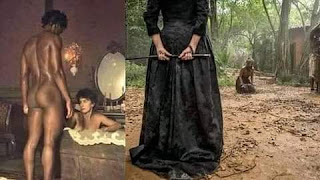1890S WOMAN CARRYING CHARCOAL
1890S
WOMAN CARRYING CHARCOAL
A very cheerful Japanese working woman, with one of her breasts exposed, is carrying three huge packs of charcoal on what appears to be a country road.
During the summer, women in the countryside often had much of their body exposed when they worked. Many men wore only a loincloth. Even in the city. This was especially the case for laborers and poor farmers.
Prudish Western visitors, used to Victorian morality, generally were greatly shocked by all this nudity and frequently wrote about it in their diaries and letters.
Nineteenth-century English travel-writer Isabella Lucy Bird (1831-1904), who in 1887 (Meiji 20) travelled deep into Japan’s heartland, described in her book Unbeaten Tracks her surprise upon seeing the scarce clothing of the people:
I write the truth as I see it, and if my accounts conflict with those of tourists who write of the Tokaido and Nakasendo, of Lake Biwa and Hakone, it does not follow that either is inaccurate. But truly this is a new Japan to me, of which no books have given me any idea, and it is not fairyland.
The men may be said to wear nothing. Few of the women wear anything but a short petticoat wound tightly round them, or blue cotton trousers very tight in the legs and baggy at the top, with a blue cotton garment open to the waist tucked into the band, and a blue cotton handkerchief knotted round the head. From the dress no notion of the sex of the wearer could be gained, nor from the faces, if it were not for the shaven eyebrows and black teeth.
The short petticoat is truly barbarous-looking, and when a woman has a nude baby on her back or in her arms, and stands staring vacantly at the foreigner, I can hardly believe myself in “civilised” Japan




Comments
Post a Comment